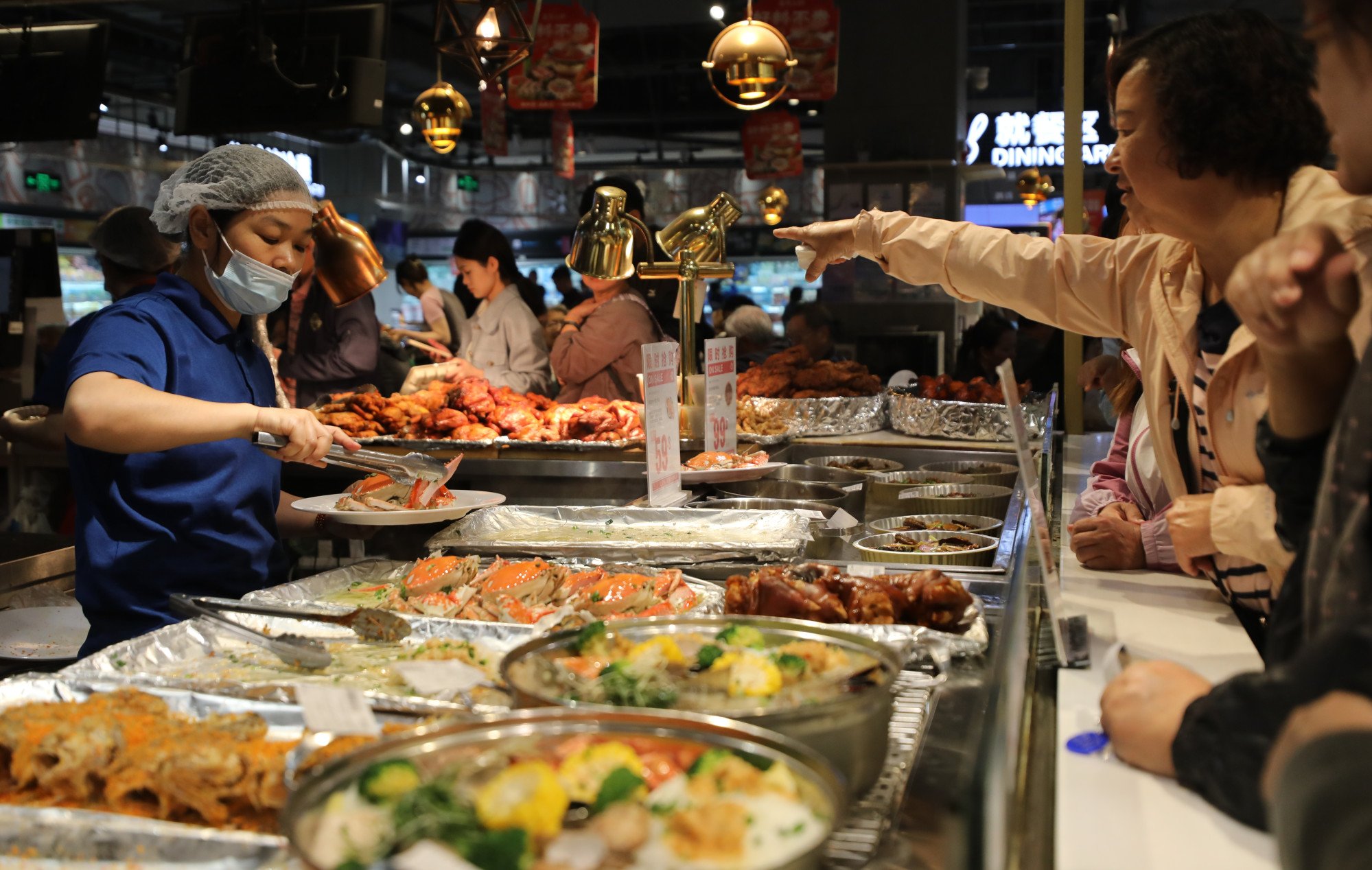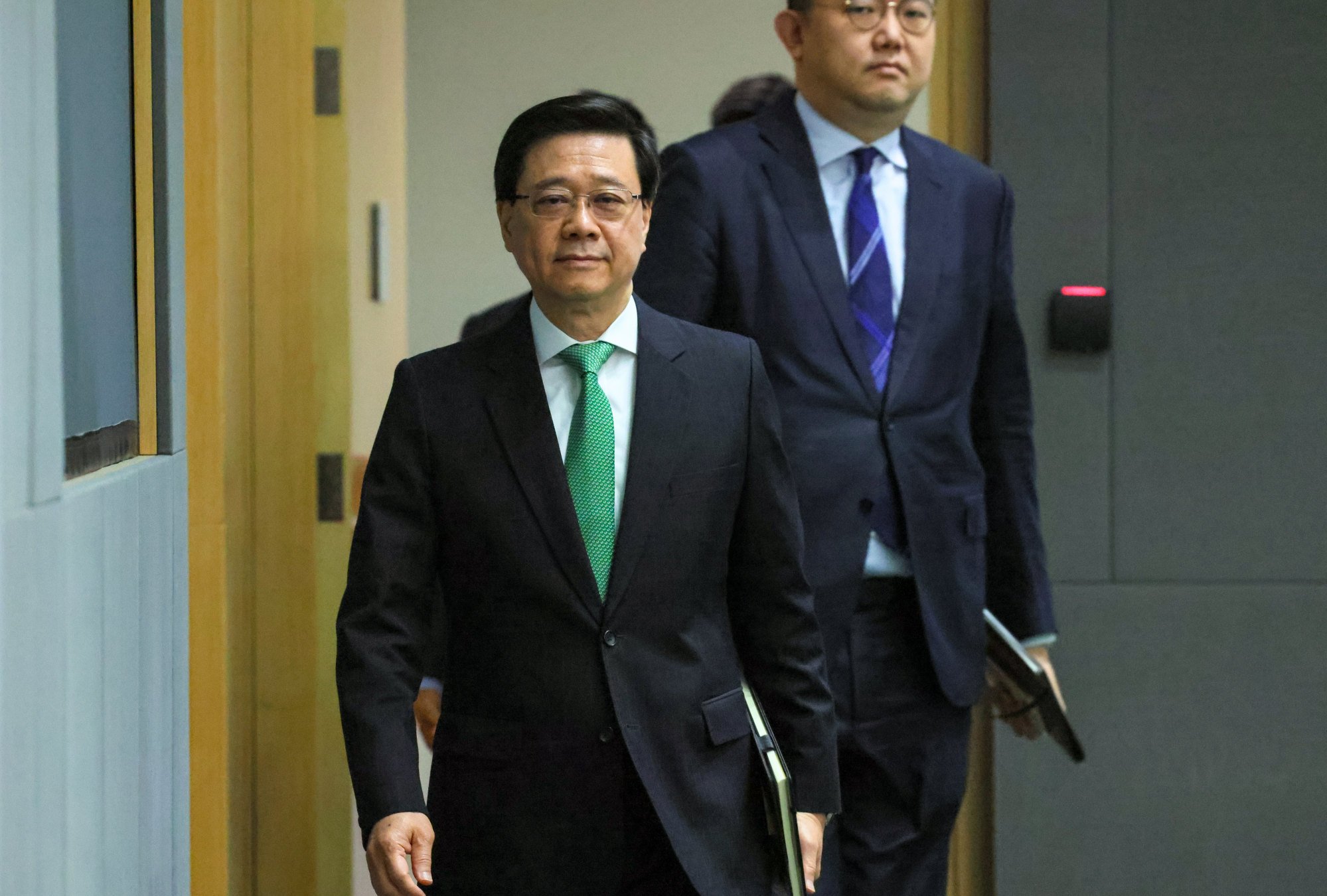
Cross-border consumption reflects further integration with mainland China, Hong Kong leader John Lee says
- John Lee urges businesses to explore ways to get more than 7 million residents to spend locally
- ‘We need to think about how to get them to consume,’ he says
The trend of Hongkongers heading north and spending their cash across the border reflects deeper integration with mainland China, the city leader has said, calling on local businesses to explore ways to draw residents in.
“When we do well in our integration with the mainland, of course many people will go across the border,” he added in an interview with RTHK set to be broadcast on Wednesday.

But he also noted that there were still more than 7 million residents staying in Hong Kong, as he called on society to work on attracting them to spend their money locally.
“Why can’t you attract more than 7 million residents to spend money here?” he said. “The comparison between more than 7 million and more than 200,000 is 97 per cent and 3 per cent.
“We have such a large number of people consuming here. We need to think about how to get them to consume.”
The immigration figures showed that more than 375,000 city residents left Hong Kong on Saturday last week, mostly through land checkpoints into the mainland. More than 259,000 Hongkongers left the city on Sunday.

Simon Wong Ka-wo, the president of the Hong Kong Federation of Restaurants and Related Trades, said Hongkongers travelled and spent money in neighbouring Shenzhen because it had lower prices, as well as better and more diverse services than the city.
He added 5.35 million people went to Shenzhen or other mainland cities of the Greater Bay Area in October, which generated a spending outflow of more than HK$4 billion.
“Hong Kong really needs to catch up,” he said. “Attracting local residents to consume in Hong Kong is a top priority.”
Wong also added that local residents accounted for 90 per cent of the city’s total consumption in the restaurant sector, while the remaining 10 per cent came from tourists.
Major changes were needed to boost local consumption, Wong said, suggesting relaxing regulations in some areas for restaurants to open outdoor dining to stimulate the night economy. He also added organising more entertainment activities and fairs with different themes would attract both locals and tourists.
Tourism-sector lawmaker Perry Yiu Pak-leung said the local economic environment had affected residents’ intention to spend money while the city was still recovering from the impact of the Covid-19 pandemic and called on the government to hold more activities of various kinds to boost consumption.
Besides encouraging locals to spend more, Yiu urged the authorities to relax the travel restrictions for residents of the mainland bay area cities to visit Hong Kong more easily. This could lead to more mainland tourists coming to Hong Kong and help increase local consumption, he said.
Travellers crossing the Hong Kong-mainland border enjoyed shorter journeys after authorities in the north lifted a mandatory health declaration earlier this month, the final pandemic curb to be axed.
The passenger figures for the National Day and Mid-Autumn Festival holidays reached a record-high of more than 100,000, according to the rail operator.

